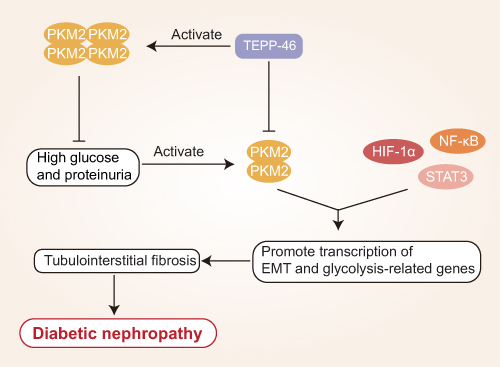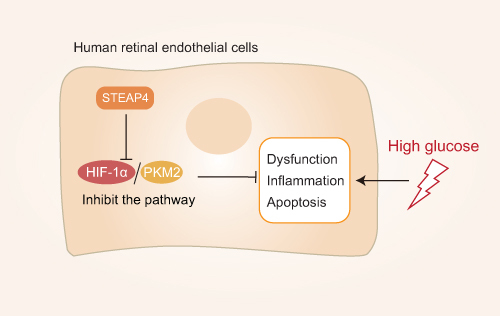Figures & data
Figure 1 Diagram of the role of PKM2 in diabetes. Dimeric PKM2 translocates into the nucleus wherein it can interact with HIF-1a, serving as a transcriptional activator to promote HIF-1a expression and the upregulation of a range of glycolysis-related genes including GLUT1, LDH, PKF-1, and HK1, thereby enhancing glycolytic activity. TEPP46 inhibits the accumulation of HIF-1a by activating dimeric PKM2 to form tetrameric PKM2 which translocates into the cytoplasm.

Figure 2 Mechanistic overview of the role of PKM2 in diabetic nephropathy. Dimerized PKM2 interacts with HIF-1a, STAT3, and NF-kB to induce the expression of genes associated with glycolysis and the epithelial-mesenchymal transition (EMT), resulting in tubulointerstitial fibrosis and diabetic nephropathy (DKD). TEPP46 promotes the tetramerization of PJM2 and inhibits HIF-1a, NF-kB, and STAT3 accumulation by reducing dimeric PKM2. High glucose levels and albuminuria induce the formation of the activated dimeric form of PKM2.


